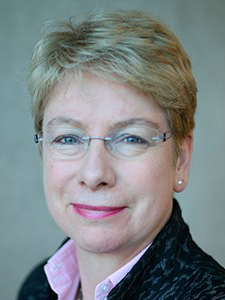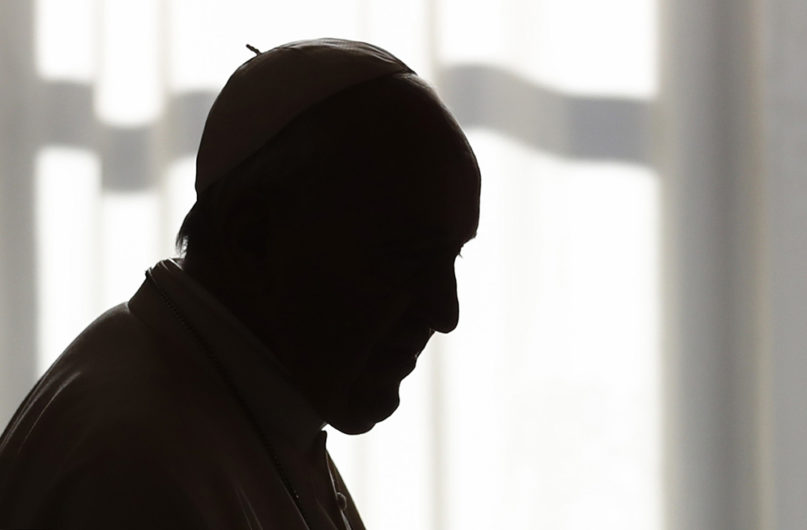VATICAN CITY (RNS) — When Pope Francis announced Tuesday (Dec. 17) that he had abolished pontifical secrecy for cases of clerical sexual abuse, some observers compared the move to a regime opening its secret files, bringing to light years of testimony and documents.
The new protocol will transform legal proceedings and the lives of abuse victims, those accused of abusing them and bishops in charge of exercising oversight.
“This is a tremendous step forward in transparency and the right of victims’ participation” in canonical trials and “also the rights of the accused,” Dutch canon lawyer Myriam Wijlens told Religion News Service in a phone interview Wednesday.
“There are only winners in this; there are no losers,” she added.
Wijlens, a professor of canon law and vice president at the University of Erfurt, knows a thing or two about the handling of sexual abuse cases in the Catholic Church. She has been on the frontier of the clerical abuse crisis since 1987. Her investigations on behalf of bishops and the superiors of religious orders have involved numerous interviews with both sides of abuse cases, the results of which were usually sent to the Vatican’s Congregation for the Doctrine of the Faith, the powerful office that has defended the church on doctrinal matters for centuries.
In 2008 Wijlens was chosen as the delegate to the World Council of Churches in Geneva by the Vatican department in charge of promoting Christian unity. Pope Francis named her to the Pontifical Council for the Protection of Minors, a sort of papal think tank on sexual abuse, in 2018.

Myriam Wijlens. Courtesy photo
According to Wijlens, part of the significance of ending pontifical secrecy on clerical abuse cases stems from the fact that the overwhelming majority of victims choose to report their abuse to church authorities rather than state police. This requires the church to protect the identity of the victims, especially when they are underage.
The church so far has failed to find the right balance between “secrecy,” which keeps things hidden from everyone, and the transparency that has been repeatedly demanded and promised in the wake of the sexual abuse crisis.
Abolishing the pontifical secret for sexual abuse cases doesn’t mean that any individual can walk into a diocesan office or the Vatican archives and demand access to legal material. But lawyers, judges and official authorities looking into clerical abuse cases can now ask for pertinent documents.
“Confidentiality and secrecy are not the same thing,” Wijlens explained. “The opposite of secrecy is transparency, but that is not necessarily the opposite of confidentiality.”
Previously, Wijlens said, when a bishop inquired about a case, the Vatican would send back the answer to the bishop with a stamp applying the pontifical secret. This meant that the bishop could not disclose the information to his own legal adviser, who had prepared and investigated the case.
“It was difficult to see to justice if there is no access to relevant information,” she said. “It is good that this restriction is now gone because it will assist the church in administering justice.”
Arturo Borelli, who claims to have been sexually abused by a priest some 30 years ago, told reporters he felt “defeated” after he and his legal team were not informed of the verdict in his own case by the Vatican court. Borelli only discovered that his alleged abuser got away scot-free thanks to a news release by the accused’s defense lawyer.
To get the attention of the Vatican court, Borelli physically chained himself to one of the entrances to the walled city-state and was arrested. At the time, Borelli condemned the “contradictory” and “secret” proceedings, which he said revived feelings of anxiety and depression that his alleged abuse had caused.
His story is not unique, and many survivors have lost faith in the Catholic Church’s willingness to back up its rhetoric about transparency in the past.
“Now the pontifical secret for these kinds of issue has been abolished,” Wijlens said. “Which means the right of the victims in the procedure is better guaranteed.”
For many victims, the next step is for the Vatican to enforce mandatory reporting to state authorities on abuse cases for clergy.
While some countries, such as the United States, Australia and France, require mandatory reporting for sexual abuse cases, others do not, resulting in a patchwork accountability system in which a person abused in the United States has a better chance of achieving justice or reparations than one who was abused in Italy or Germany.
Another issue, according to Wijlens, is that under canon law, a priest accused of sexual abuse in the Catholic Church is tried for having violated his vow of celibacy. The focus is on the promise that he made with God, not on the actual person whom he abused.
“What the church needs to do is to strengthen its understanding of the violation of the dignity of the human being. Once the delict is seen from that perspective it is possible to attend to the rights of victims in a penal case. I personally believe, as a canon lawyer, that we could strengthen in penal processes the participation of the victim. Which is rather weak at the moment,” Wijlens said.





